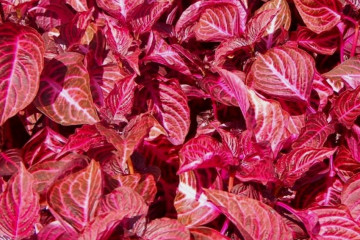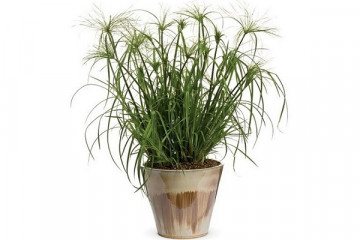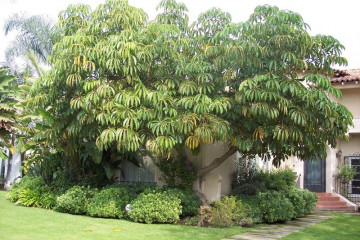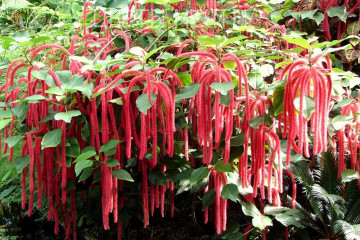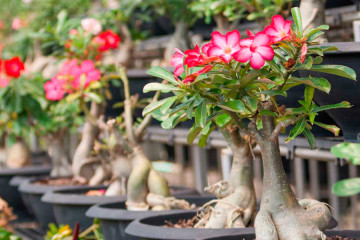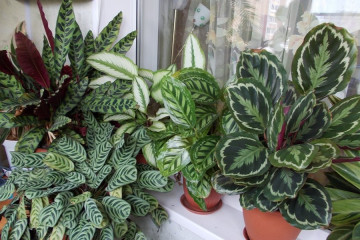Calathea flower - home care
Content:
- Biological description of the plant
- Briefly about the history of appearance
- Beneficial features
- Popular types of calathea
- Calathea Varshevich
- Calathea medallion
- Calathea Lancifolia
- Calathea Rufibarba
- Calathea Sanderian
- Calathea saffron
- Calathea Orbifolia
- Calathea Makoya
- Calathea Lubbers
- Calathea Bahema
- Calathea mix
- Calathea striped
- Calathea silvery
- Calathea Network
- Calathea Misto
- Calathea Leopardina
- Calathea Dotti
- Calathea Majestic White Star
- Features of caring for a flower at home
- When and how it blooms
- How Calathea reproduces
- Transfer
- Possible growing problems and diseases
- Signs and superstitions
The calathea plant is popular due to its unique properties that can positively affect human health. To grow a beautiful flower, you need to properly care for it, know how to transplant it and protect it from possible dangers.
Biological description of the plant
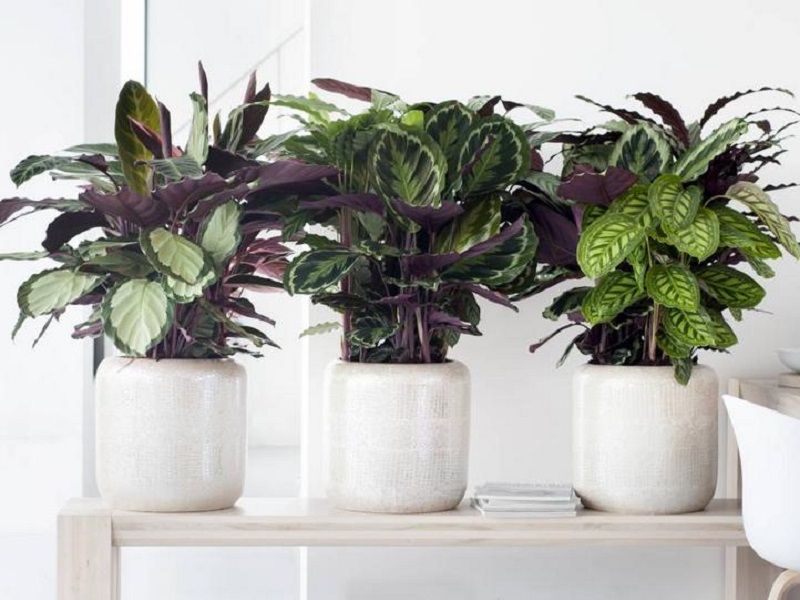
Calathea at home
This is a low-growing herb up to 90 cm in height with beautiful painted decorative leaves, which belongs to the Marantov family. The attractiveness of the culture is in the amazing pattern and veins on large, up to 25-30 cm long leaves, as well as in the dark color of the underside of the leaf plate.
Briefly about the history of appearance
The homeland of the perennial is the rainforests of the tropics, which are located in Central and South America. The Europeans called the flower "the crown of the Incas", as the plant outwardly resembled the headdress of the reigning persons.
Calathea is translated from ancient Greek as "basket". This is no coincidence, since the leaves of the plant were used for weaving baskets.
Beneficial features
The composition of calathea contains phytoorganic substances that can reduce the content of formaldehyde in the atmosphere by up to 10%.
Popular types of calathea
Calathea, all types of which can be practically grown at home, are presented in large numbers.
The most common are:
Calathea Varshevich
Plant height - from 15 to 120 cm. Small buds are painted in white, pink, purple. They are collected in spike-shaped inflorescences on a short petiole.
Calathea medallion
The flower reaches about 80 cm in height, but in indoor conditions - no more than 30 cm. Glossy leaves on long petioles. Inflorescences are spike-shaped. The color palette is wide: from white to purple.
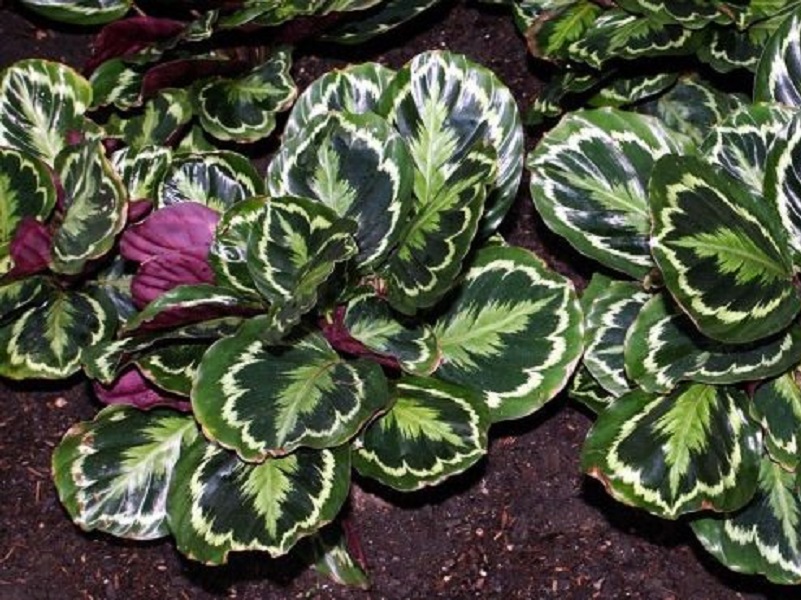
Calathea medallion
Calathea Lancifolia
The culture is capable of stretching up to 80-90 cm in height. The leaves are large with a dark pattern and wavy edges. The inflorescence is an ear of three moths, painted in a white or pink shade.
Calathea Rufibarba
Plant height - 60-70 cm. It has small narrow leaves with ribbed edges and a shiny surface. Inflorescences are compact, round or spike-shaped, white or pale yellow.
Calathea Sanderian
The culture grows no more than 70 cm in height. The foliage is oval ovoid, dark green in color. The buds are white or purple.
Calathea saffron
It has a characteristic shortened stem about 30 cm high. The leaves are juicy, oval, with a ribbed surface. The buds of a lanceolate culture are tubular, bright orange in color with dark blotches.
Calathea Orbifolia
Height - within 40-60 cm. The leaves are large, round, with high petioles.The flower is decorated with small pale buds, collected in inflorescences in the form of an ear.
Calathea Makoya
The height of the variety is 50 cm. The leaf blade is thin and graceful with a dark pattern. It does not bloom at home, in nature the flower looks inconspicuous.
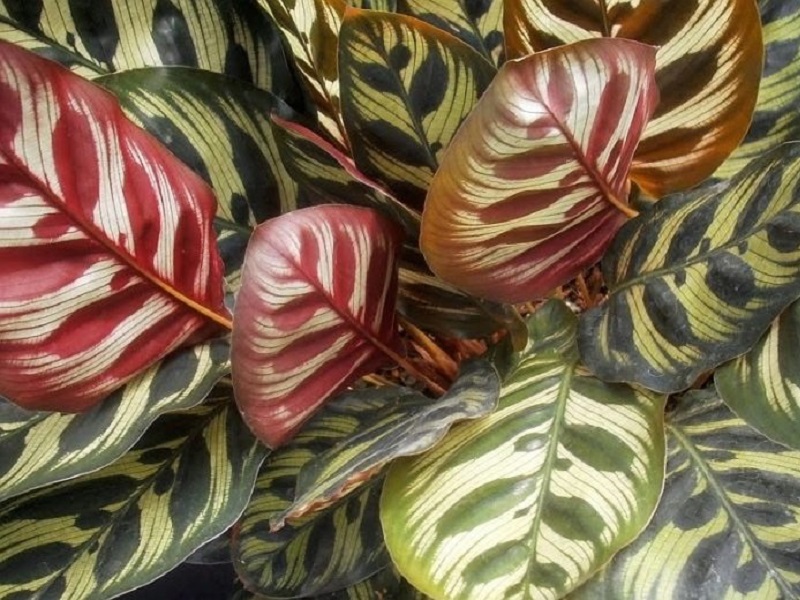
Calathea Makoya
Calathea Lubbers
The culture reaches 60 cm. It is distinguished by variegated semicircular leaves. Blooms in small inflorescences of white or lemon shade.
Calathea Bahema
The height of the culture is 40 cm. It has established itself as the most unpretentious species. It has dense, elongated leaves with a dark pattern. The inflorescence is in the form of an ear, not bright, but attractive.
Calathea mix
The plant reaches 70 cm. The pattern on the leaf plate consists of dark and light stripes. Inflorescences are spike-shaped, of various shades.
Calathea striped
The height of the flower varies from 70 to 80 cm. A round striped leaf blade, alternately colored in dark and light colors.
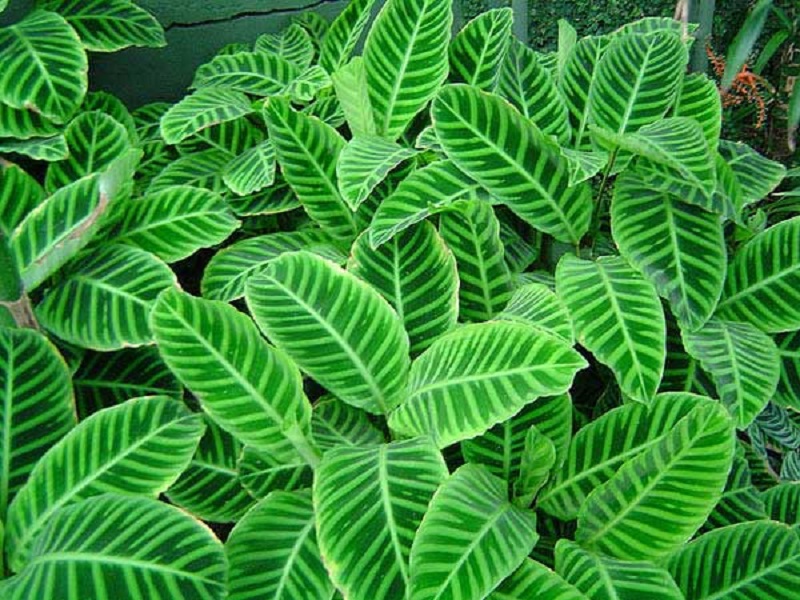
Calathea striped
Calathea silvery
It grows to a maximum of 80 cm. It has oval leaves with sharp tips of a silvery shade with a dark pattern. It is characterized by small flowers of pastel colors.
Calathea Network
A compact plant can reach a height of 90 cm. Leaves are dense, large, up to 35 cm in length. Their color resembles a glass mosaic. Mosaic calathea blooms with small white buds.
Calathea Misto
Plant height - from 90 to 120 cm. Large oval leaves are light towards the center.
Calathea Leopardina
It grows up to 40-50 cm. It attracts attention with lanceolate leaves, 3-5 cm wide and 10-12 cm long on oblong petioles. The top of the leaf is light green, decorated with dark green spots, the back side is pink-lilac.
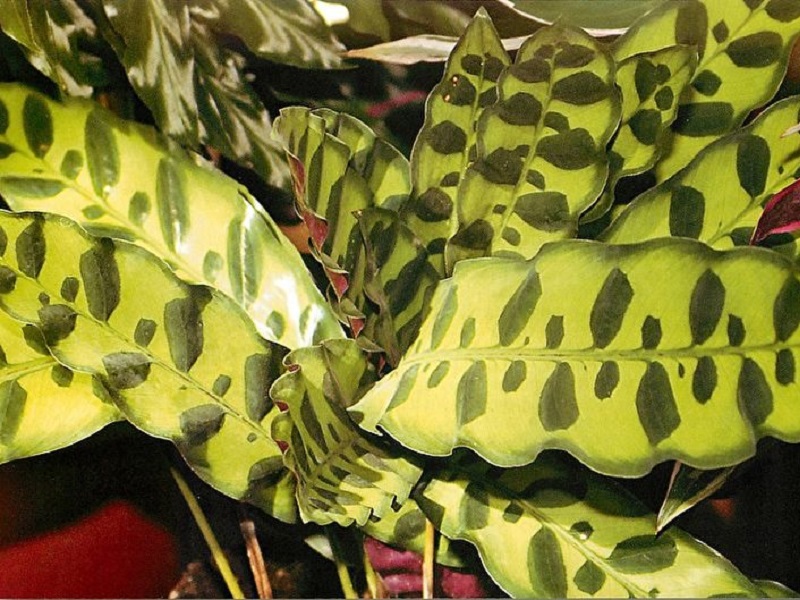
Calathea Leopardina
Calathea Dotti
A compact shrub up to 30 cm high. Large, round, smooth leaves 15 cm long have a pointed tip, a blunt base and a wavy edge. The color of their upper side is dark green with a malachite tint, the color of the back is purple.
Calathea Majestic White Star
A beautiful bush that forms large leaves that have the correct shape in the form of an oval. Their main tone is rich green, against the background of which there are whitish stripes. The leaf blade has a glossy sheen and is on long petioles.
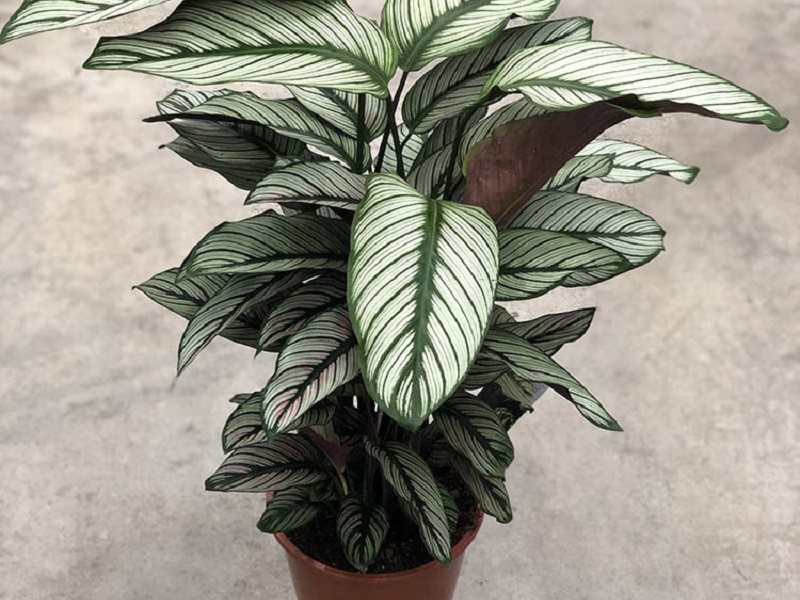
Calathea Majestic White Star
Features of caring for a flower at home
The secret to successfully growing calathea at home is to create the most comfortable conditions for it.
Temperature
In summer, the optimal temperature regime in the daytime is 22-25 ° С, at night - not lower than 18 ° С. In winter, it should be maintained at 18-20 ° C during the day and 16 ° C at night. When growing a culture, it is important to take into account that it does not tolerate sudden changes in temperature.
Lighting
The calathea flower belongs to shade-tolerant crops. But it is better not to put the plant in a dark corner of the room, since with a lack of light, the foliage will lose its beautiful color. Also, the direct rays of the sun will negatively affect the leaves, they will lose their attractiveness.
Watering
In the summer months, watering the calathea is necessary once every 3-4 days, constantly maintaining the substrate in a moist state. In winter, it is enough to moisten it once every 7-8 days, while the soil mixture should dry out 2-3 cm deep. Ignoring these rules can provoke the appearance of diseases.
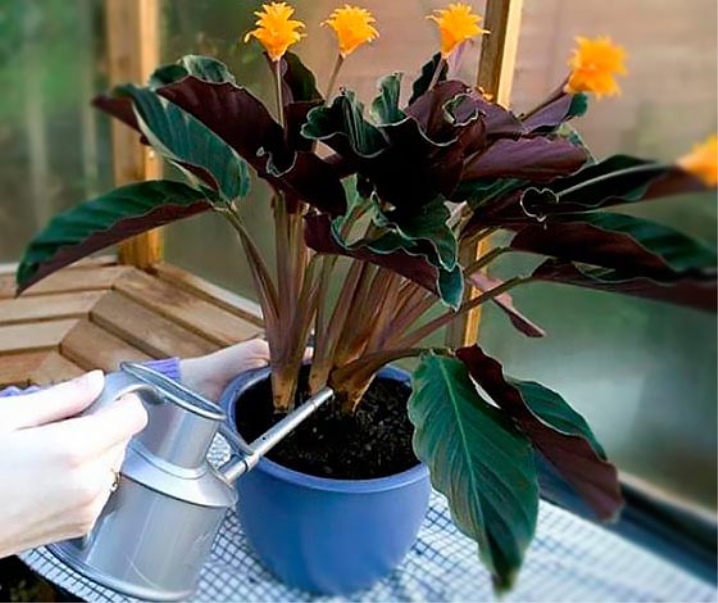
Watering is carried out with warm water
Spraying
It is necessary to spray the plants depending on the type of crop. There are varieties with velvety leaves that do not tolerate this procedure, as it provokes the appearance of brown spots.
Humidity
The culture thrives in humid rooms. Therefore, it is useful to moisturize the plant by using a spray bottle or by placing it near an electric humidifier.
Priming
Purchased soils for azaleas and orchids are suitable as a soil substrate, which must be mixed in equal parts, adding sand and perlite. It is also recommended to make the mixture yourself, taking leafy soil, humus, peat, sand in a ratio of 2: 1: 1: 1.
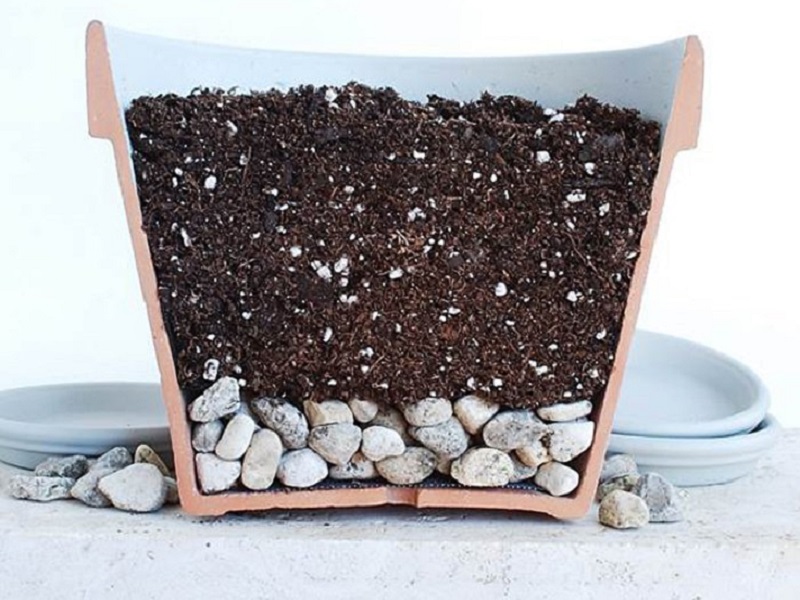
The soil for the culture requires specific
Top dressing
From April to October, it is recommended to feed the plant no more than 2 times a month, using liquid complex fertilizers intended for decorative deciduous crops. During the rest period, feeding is carried out 1 time in 6-8 weeks. In this case, it is important to observe the proportions indicated in the attached instructions.
Pruning
Regular pruning is not required for the plant. It is only necessary to remove dried and damaged foliage in a timely manner.
Features of winter care
During the rest period, the number of watering, dressing should be reduced. Excessive humidity must be avoided, as at low temperatures, root rot can begin. This process takes place quickly enough, and it will not be possible to save the flower.
When and how it blooms
Not all types of culture are capable of blooming at home. But there are varieties that delight with their unique flowers.
Flowering period
In spring or summer, bright, nondescript inflorescences form between the leaves. They grow on long, bare peduncles with round sections.
Flower shapes
Small buds are purple or purple in color. They are hidden under beautiful bracts, which form a dense spike-shaped inflorescence. Their color can be white, orange, purple.
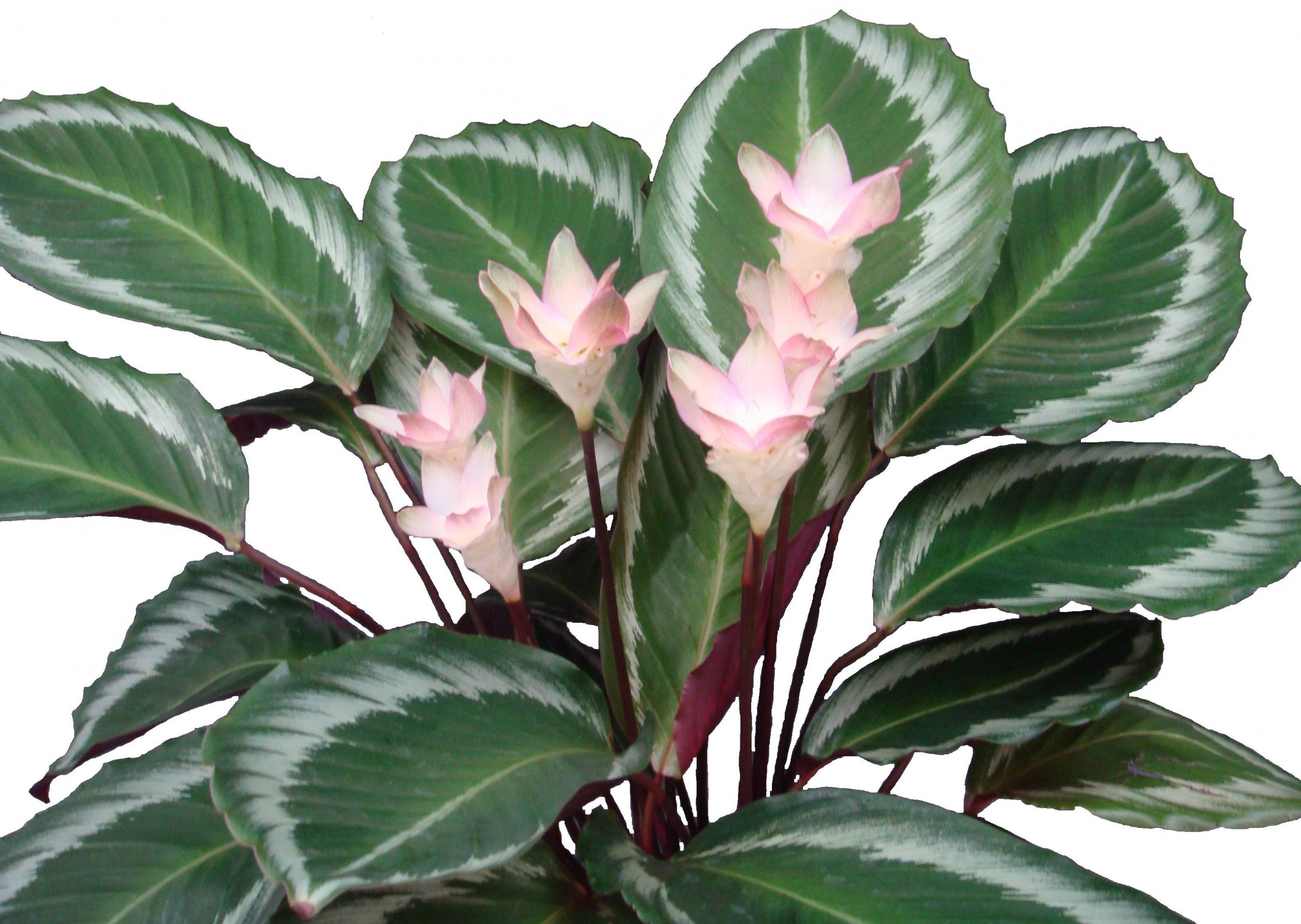
Flowering calathea
How Calathea reproduces
Calathea is a flower that can be propagated by seed, rooting cuttings or air layers.
Germinating seeds
Breeders, or people running a flower business, are engaged in the propagation of crops using seeds.
Calathea seeds are small yellowish balls. They are collected in late autumn, when the peduncles are completely dry. Before sowing, it is necessary to dry the material for 2 hours in the open air. After that, the seeds should be scattered evenly over the surface of the soil, consisting of black soil and river sand in a ratio of 2: 1. Then you need to water and send the containers with crops to a warm place with a temperature of 22-25 degrees.
Rooting cuttings
For propagation by cuttings, it is necessary to choose a well-developed stem, 12-15 cm long, with at least 1 growth point and at least 3 leaves. The selected stalk must be carefully cut and placed in a pot with a soil mixture containing peat, humus, river sand in a 1: 1: 1 ratio and watered abundantly. From above it should be covered with a transparent plastic bag, providing the plant with air access.
In order for the stalk to successfully take root, it is important to organize proper care for the calathea. When one new leaf is formed on the stem, you need to transplant the young flower into a new pot.
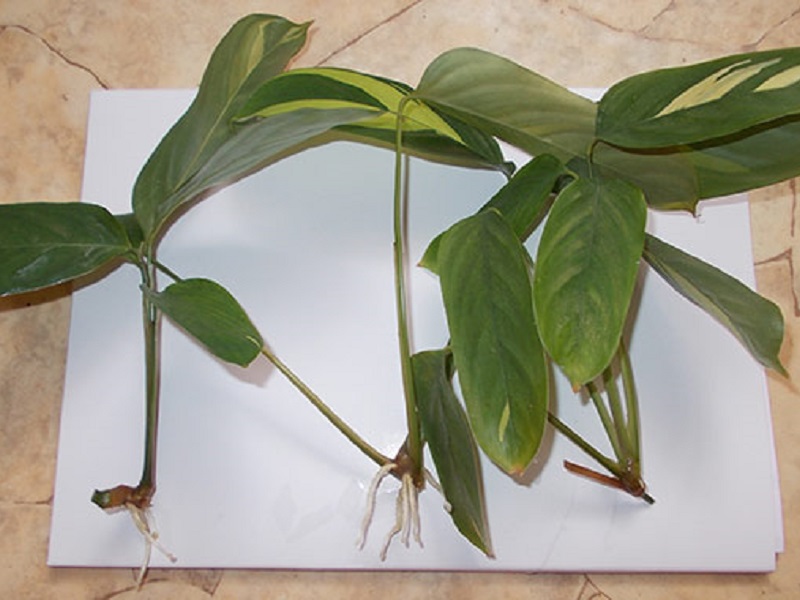
Propagation by cuttings
Air layering
This method involves bending the stem to the ground, followed by fixing and sprinkling it with soil. After the formation of their own roots, the layers should be carefully separated from the mother plant and planted separately.
Transfer
For the normal development of a flower, it is important to transplant it regularly, changing the soil.
A transplant is recommended annually in the spring. When the culture reaches 4 years of age, the procedure should be performed every 2 years.
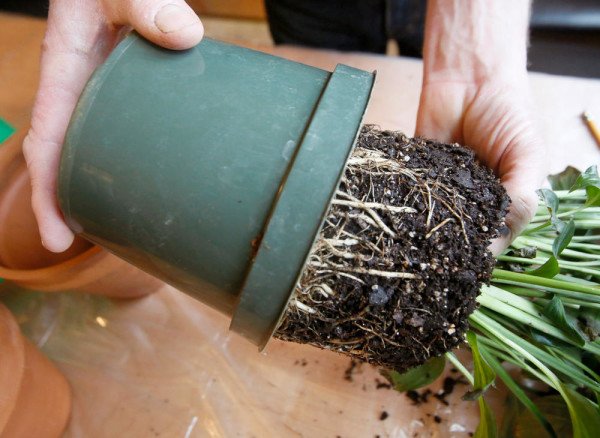
Transplant process
Possible growing problems and diseases
Problems that most often arise when growing calathea:
- Yellowing and wilting of the lower leaves. Fusarium wilting may be the cause. The disease cannot be treated, so it is better to dispose of the flower.
- Damage by pests. Aphids, ticks, scale insects, mealybugs can parasitize on kalatea. Insecticides will help in the fight against them.
- Coiling of a sheet plate. The reason lies in insufficient moisture. When the leaves begin to curl, it is important to adjust the watering and keep the soil slightly damp.
- Drying of the edges of the leaves. This problem is caused by very dry air, insufficient lighting, excess fertilizers. Proper care is recommended.
- The foliage is covered with brown spots. This can provoke a sunburn or waterlogging of an earthen coma.
To make fewer problems with the flower, it is important to simply comply with the conditions of agricultural technology and the requirements for growing crops.
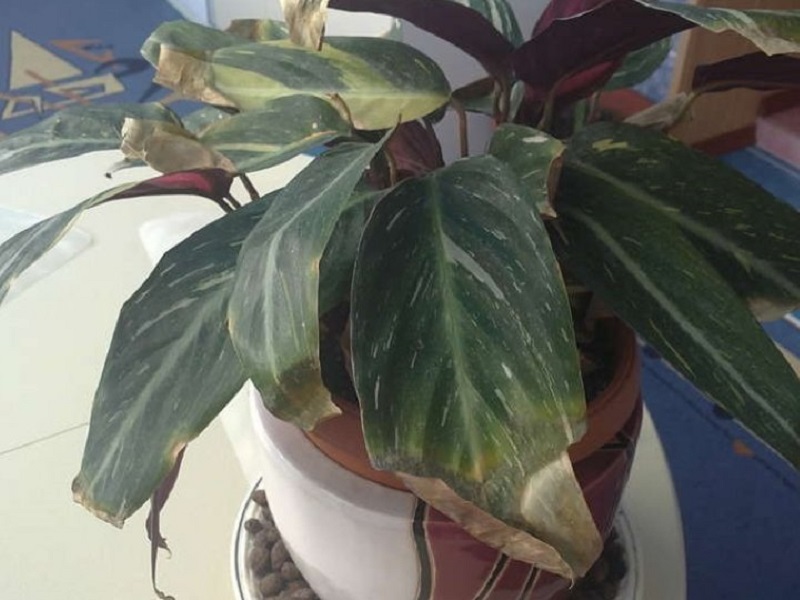
Drying leaves provokes too dry air
Signs and superstitions
Why is culture so popular with flower growers? Calathea is a symbol of family happiness. The plant is able to bring calmness and peace to the house, as it can absorb negative energy. The culture is considered one of the best home flowers. This is a shield that protects from the evil eye, gives love, joy and tranquility, helps to become stronger, to succeed in any endeavors.
Calathea, home care for which will not be difficult even for a novice florist, is presented in a huge range of species. Therefore, it will not be difficult to choose the right variety. The main thing is to monitor the condition of the flower and organize comfortable conditions for it in time. In return for care and attention, the plant will delight you with its beauty and help to create spectacular compositions for the interior.
